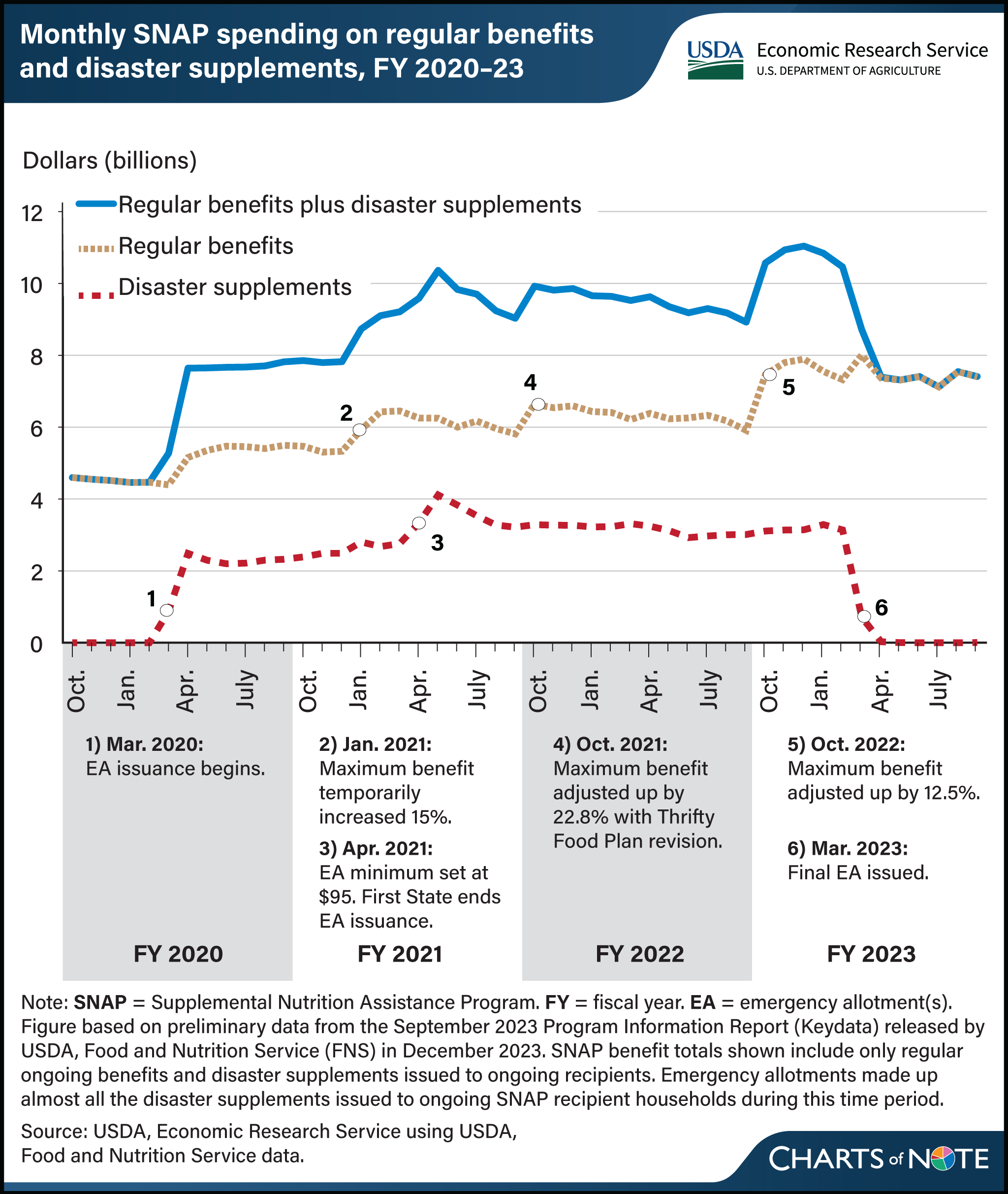SNAP benefit spending varied from FY 2020 to FY 2023 with changes to maximum benefit amounts and emergency allotments
- by Jordan W. Jones
- 7/31/2024

The Supplemental Nutrition Assistance Program (SNAP) is the largest of USDA’s domestic food and nutrition assistance programs, accounting for about two-thirds of spending on these programs in recent years. Total SNAP spending increased following the declaration of the Coronavirus (COVID-19) public health emergency, peaking at $125.0 billion for the year in fiscal year (FY) 2021 and falling to $112.8 billion in FY 2023. Maximum benefit amounts were increased three times during this period in January 2021 (temporarily), October 2021 (with the revision of the Thrifty Food Plan), and October 2022 (an annual adjustment for inflation), with total regular benefit spending rising following each of these increases. SNAP households were also issued temporary emergency allotments to supplement their regular benefits beginning in March or April 2020, with a minimum emergency allotment amount being implemented in April 2021. Disaster supplement spending increased after each of these policy changes, but then fell off after emergency allotments ended following the February 2023 issuance. Total SNAP spending declined in FY 2023 by about 6 percent, as the drop in disaster supplement spending outweighed the higher spending from the 12.5-percent regular benefit adjustment. Together, these policy changes explain a large part of increased SNAP spending in the period after the pandemic’s onset in 2020. This chart is based on preliminary data released in December 2023 and appears in the USDA, Economic Research Service’s Food and Nutrition Assistance Landscape: Fiscal Year 2023 Annual Report, the Amber Waves article SNAP Spending Rose and Fell With Pandemic-Era Changes to Benefit Amounts, and was discussed in a recorded webinar.

